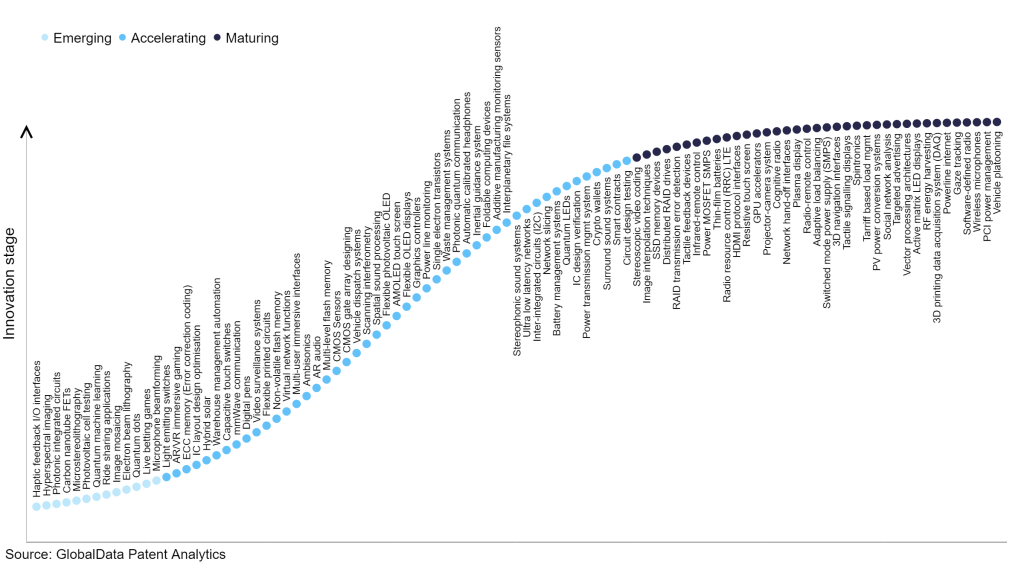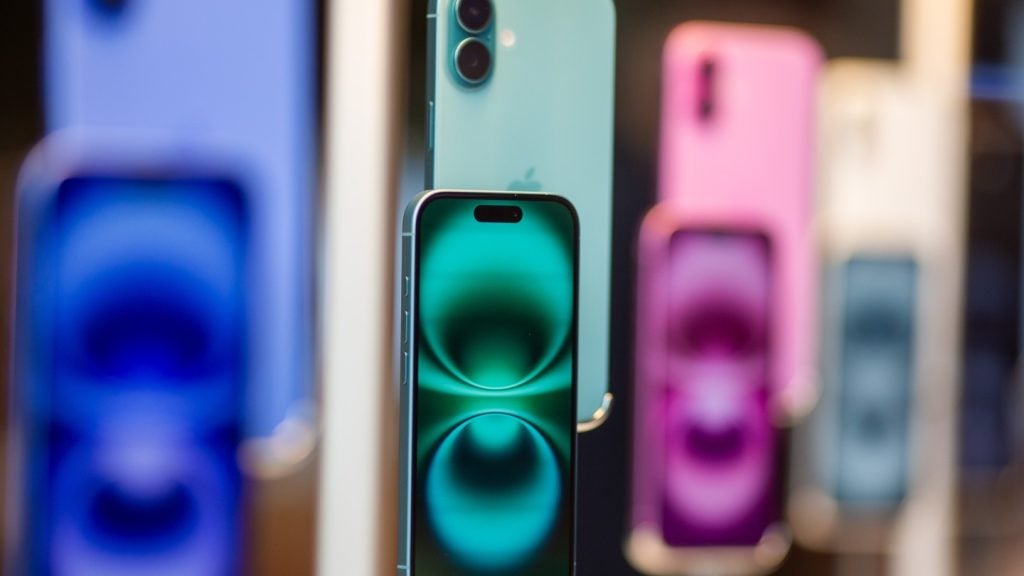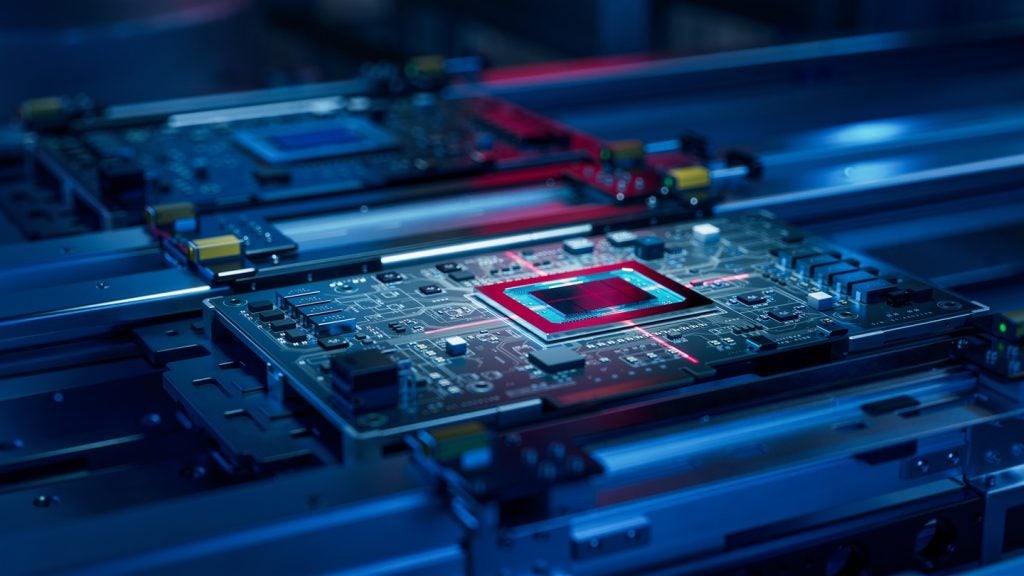The technology industry continues to be a hotbed of innovation, with activity driven by the increasing demand for interactive user interfaces, ease of use, cost-effectiveness, and versatility in various devices, and growing importance of technologies such as flexible films, conductive coatings, and sensing layers that enable accurate touch detection and responsiveness. In the last three years alone, there have been over 3.6 million patents filed and granted in the technology industry, according to GlobalData’s report on Technology Innovation: Resistive touch screen. Buy the report here.
However, not all innovations are equal and nor do they follow a constant upward trend. Instead, their evolution takes the form of an S-shaped curve that reflects their typical lifecycle from early emergence to accelerating adoption, before finally stabilising and reaching maturity.
Identifying where a particular innovation is on this journey, especially those that are in the emerging and accelerating stages, is essential for understanding their current level of adoption and the likely future trajectory and impact they will have.
300+ innovations will shape the technology industry
According to GlobalData’s Technology Foresights, which plots the S-curve for the technology industry using innovation intensity models built on over 2.5 million patents, there are 300+ innovation areas that will shape the future of the industry.
Within the emerging innovation stage, microphone beamforming, live betting games, and quantum dots are disruptive technologies that are in the early stages of application and should be tracked closely. Circuit design testing, smart contracts, and surround sound systems are some of the accelerating innovation areas, where adoption has been steadily increasing. Among maturing innovation areas are, vehicle platooning, peripheral component interconnect (PCI) power management, and wireless microphones, which are now well established in the industry.
Innovation S-curve for the technology industry

Resistive touch screen is a key innovation area in technology
A resistive touch screen is an input device that detects touch input through the pressure applied to a flexible layer coated with a resistive material. The point of contact is determined by pressing the layers together, and the controller detects the coordinates of the touch and sends the information to the processor.
GlobalData’s analysis also uncovers the companies at the forefront of each innovation area and assesses the potential reach and impact of their patenting activity across different applications and geographies. According to GlobalData, there are 90+ companies, spanning technology vendors, established technology companies, and up-and-coming start-ups engaged in the development and application of resistive touch screen.
Key players in resistive touch screen – a disruptive innovation in the technology industry
‘Application diversity’ measures the number of different applications identified for each relevant patent and broadly splits companies into either ‘niche’ or ‘diversified’ innovators.
‘Geographic reach’ refers to the number of different countries each relevant patent is registered in and reflects the breadth of geographic application intended, ranging from ‘global’ to ‘local’.
Patent volumes related to resistive touch screen
Source: GlobalData Patent Analytics
Fujifilm is a leading patent filer in resistive touch screen technology. One of the company’s patents focuses on creating a conductive film with a polarizer that maintains polarizer performance and prevents cracking caused by moisture and heat changes. The conductive film consists of a polarizer and a conductive layer containing fullerene functionalised carbon nanotubes. Additionally, a display device with a touch panel incorporating this conductive film is provided.
Other prominent patent filers in the space include LG and Nitto Denko.
By geographic reach, Compal Electronics leads the pack, followed by Sekisui Chemical and NOK. In terms of application diversity, Teijin holds the top position, followed by Zeon and TactoTek.
Resistive touch screens have significant importance in various industries as they offer cost-effective touch-sensitive input solutions. Their versatility and ability to work with both stylus and finger input make them suitable for a wide range of applications, including handheld devices, medical equipment, and industrial control systems.
To further understand the key themes and technologies disrupting the technology industry, access GlobalData’s latest thematic research report on Technology.
Data Insights
From

The gold standard of business intelligence.
Blending expert knowledge with cutting-edge technology, GlobalData’s unrivalled proprietary data will enable you to decode what’s happening in your market. You can make better informed decisions and gain a future-proof advantage over your competitors.







